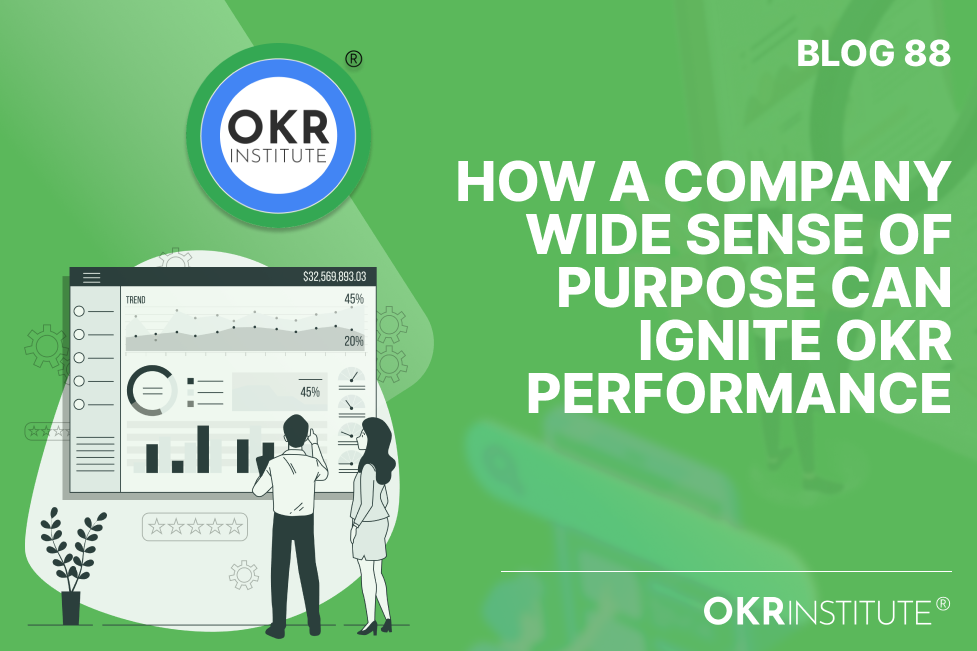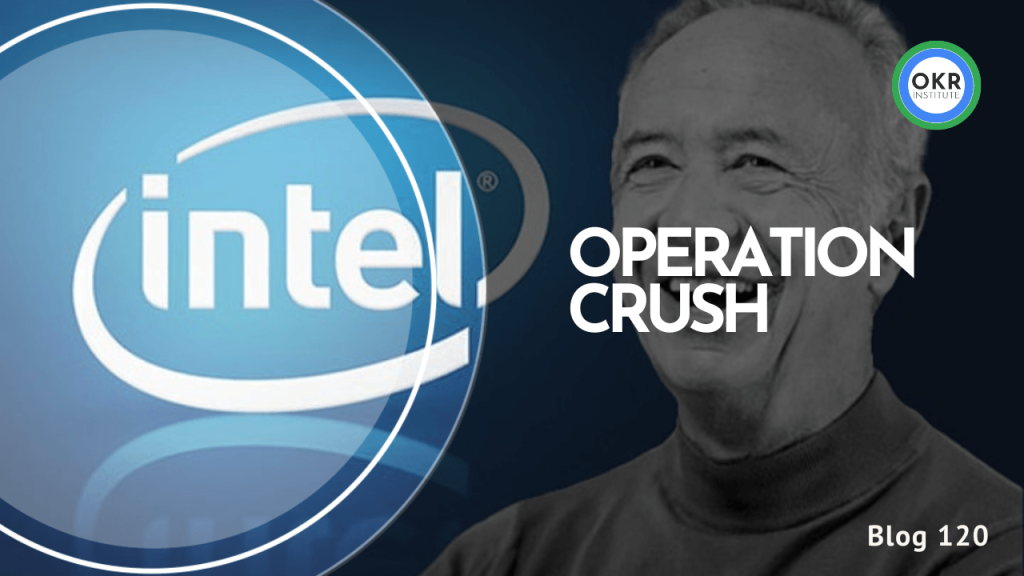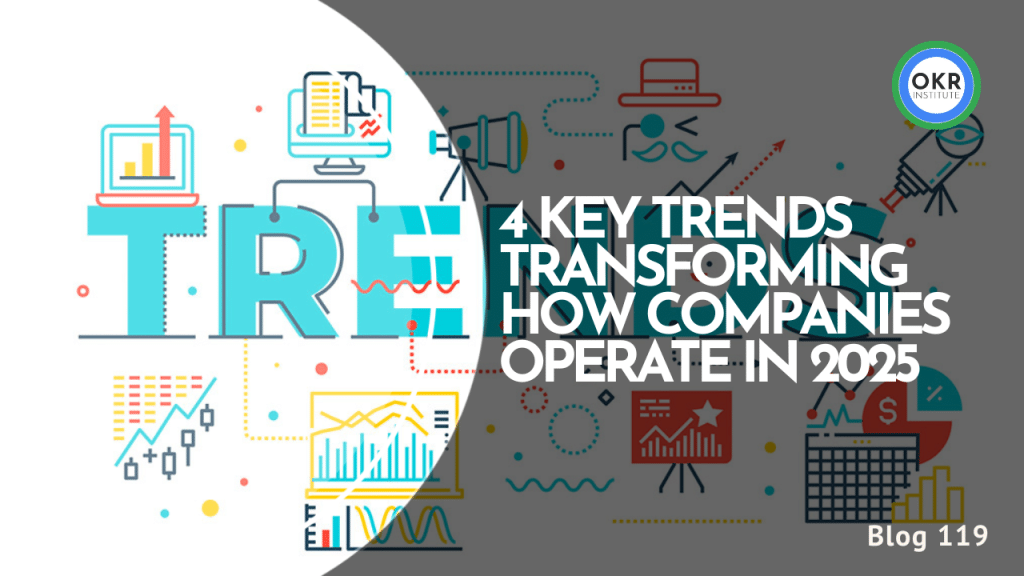How a Company Wide sense of Purpose can Ignite OKR Performance

Introduction
There are several elements involved in creating high-performing teams and teams that achieve their OKRs. Most team members want a Cause, a Career, and a Community. They want to feel that they are part of something ‘bigger,’ that there is also a real opportunity for career progression, and that they are part of a team that shares the same values.
An essential element of creating high-performing teams is to support the alignment of team behaviors to the purpose (cause) of the company. Generally, when team members truly sense that their work has a positive impact and adds value to others, they will be more inclined to pursue far-reaching goals and improve themselves.
A true sense and understanding of purpose can help teams ignite OKR performance. During OKR setting workshops, the focus is often to align objectives with the company’s vision and cross-functionally. In addition to the ‘norm’ of OKR alignment, we align OKRs with the company’s purpose, and we are giving ourselves an improved chance to make OKRs both more successful and sustainable.
Purpose a ‘driver of energy’
Take NorthWest Airlines purpose statement as an example:
‘We connect people to what matters in their lives‘.
This would mean as pilots, air hosts and hostesses, and as other members of the crew, we are not merely flying people to a destination, we carry the understanding in our hearts as we perform our duties that we are connecting people to their families, friends and crucial business connections.
Following a purpose means that we are not only doing our work for the sake of doing work or to earn a salary. We are also fully aware of and energized by the positive difference that we are making. This way, our work has more meaning and we can link our daily tasks and goals to this meaning and impact that we are creating.
A purpose statement should therefore not be merely a statement but a principle that is brought to life by our belief in the impact that we are creating and our daily actions aligned to the same purpose statement.
A purpose statement should both illicit sincere emotion and energized action. Here are more examples of purpose statements.
Harley Davidson
‘We create products, services and experiences that inspire our customers to discover adventure, find freedom for the soul and live the Harley-Davidson lifestyle’
Nike
‘To bring innovation and inspiration to every athlete in the world – If you have a body then you are an athlete’
Connecting OKRs and Purpose
It generally makes OKRs more sustainable and prosperous when we align them with the company’s purpose statement. However, this form of alignment is only successful if the company’s purpose statement is regularly referred to, acted upon, and even revered across the company.
Let us take Harley Davidsons’ purpose statement as an example:
‘We create products, services, and experiences that inspire our customers to discover adventure, find freedom for the soul and live the Harley-Davidson lifestyle’
‘Inspiring our customers,’ ‘Discovering adventure,’ ‘Finding freedom’, and ‘Living the Harley Davidson Lifestyle’ can all become objectives supported by key results and an action plan that would, in turn, ensure that the purpose statement becomes a reality and, is continuously acted upon.
FAQs
How does a company’s sense of purpose impact OKR performance?
A company’s sense of purpose provides a clear and motivating reason for team members to align their goals and efforts. When employees understand how their work contributes to a greater cause, they are more motivated to achieve their objectives. This alignment not only boosts morale but also drives employees to pursue ambitious OKRs that support the company’s vision.
Why is aligning OKRs with the company’s purpose important?
Aligning OKRs with the company’s purpose ensures that the objectives are meaningful and relevant. This alignment helps teams see the bigger picture and understand the impact of their work. It also fosters a sense of unity and shared values, making it more likely for teams to be committed to their goals and to collaborate effectively to achieve them.
Can you provide examples of purpose statements and their impact on OKRs?
Sure, here are a couple of examples:
- NorthWest Airlines: “We connect people to what matters in their lives.” This purpose statement means that all employees, from pilots to ground staff, understand that their work is about connecting people with their loved ones and important opportunities, not just transporting passengers. This deeper understanding can inspire employees to set and achieve more meaningful OKRs.
- Harley Davidson: “We create products, services, and experiences that inspire our customers to discover adventure, find freedom for the soul, and live the Harley-Davidson lifestyle.” This purpose can be translated into OKRs that focus on innovation, customer experience, and brand loyalty, ensuring that every objective contributes to the overall mission of inspiring adventure and freedom.
How can a purpose statement drive employee engagement and performance?
A well-crafted purpose statement elicits sincere emotion and energized action from employees. It gives their work meaning and connects their daily tasks to a larger, impactful narrative. When employees believe in the company’s purpose and see their role in achieving it, they are more likely to be engaged, productive, and committed to their OKRs.
What steps can companies take to align their OKRs with their purpose?
Companies can follow these steps to align their OKRs with their purpose:
- Clearly Define the Purpose: Ensure that the purpose statement is clear, inspiring, and actionable.
- Communicate the Purpose: Regularly share the purpose statement with all employees and explain how it relates to their work.
- Incorporate the Purpose into OKR Setting: During OKR workshops, align objectives with the purpose statement and ensure key results support this alignment.
- Reinforce the Purpose: Continuously refer to and act upon the purpose statement in meetings, performance reviews, and company communications.
- Celebrate Successes: Highlight and celebrate achievements that contribute to the company’s purpose, reinforcing its importance and impact.
Contact us to Learn more about the alignment of OKRs:
Talent Development Director of the OKR Institute
Related Courses
Recent Posts
Tags
#OKR
#OKR Coaching
#OKR Coach







